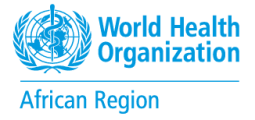Africa faces critical shortage of oral health workers amid rising disease burden
The WHO Africa regional oral heath workforce fact sheet will serve as a reference for policymakers and a wide range of stakeholders
Africa faces a chronic shortage of oral health workers due to underinvestment, leaving millions of people without adequate care and vulnerable to preventable oral diseases, according to a World Health Organization (WHO) workforce fact sheet on oral health released today.
The WHO fact sheet states that the region has been experiencing the highest increased number of cases of oral diseases like dental caries, gum diseases, and tooth loss over the last three decades across all WHO regions. In 2021, around 42% of the population in the African region suffered from untreated oral diseases. This is compounded by a chronic shortage of health workers to address diseases burden. For example, between 2014 and 2019, the number of dentists and the number of oral health workers, including dentists, dental assistants/therapists and dental prosthetists per 10 000 population in the Region was one tenth and one sixth of the global ratio, respectively.
In 2022, the region had only about 57 000 oral health professionals, representing a mere 1.11% of the total health workforce in the region and a ratio of 0.37 professionals per 10,000 people. This figure falls far below the 1.33 oral health workers per 10 000 (158 916 total; 83 099 dentists and 75 817 dental assistants and therapists) needed in 2022 to achieve basic universal health coverage targets.
This deficit exposes millions to preventable suffering and highlights a critical breakdown in oral health workforce. It also reveals the need for about 199 170 oral health workers (1.37 per 10 000 population) including 103 858 dentists and 95 312 dental health assistants and therapists by 2030.
Oral health remains a low priority in many African countries, leading to inadequate financial and technical investment. Moreover, oral health has historically been siloed and treated as separate from general health and the broader health care system. This might contribute to isolated oral health management approaches, separated workforce training, increasing costs, and siloed care delivery infrastructures. This silo approach has led to competition for already scarce human and financial resources. Although there are over 4,000 health training institutions in the Region, only 84 dental education institutions were identified across 26 Member States.
The shortage of skilled oral health workforce hampers progress towards achieving universal health coverage. Only 17% of the regional population have access to essential oral health interventions as part of the health benefit packages of the largest government health financing schemes. Progress in disease prevention is also slow, including fluoride use and sugar reduction efforts.
“Africa cannot afford to neglect oral health. Neglect has severe, lasting consequences for overall well-being,” said Dr Chikwe Ihekweazu, Acting WHO Regional Director for Africa. “It’s crucial for countries to do more to increase health workforce, access to affordable prevention and care services and ensure that people are equipped with the knowledge and skill on promoting oral health.”
The WHO Africa regional oral heath workforce fact sheet will serve as a reference for policymakers and a wide range of stakeholders. In addition, it guides the advocacy process toward better prioritization of oral health in the region to tackle this alarming oral health situation.
It calls for urgent action to address the oral health workforce crisis, including aligning national oral health and health workforce strategies with the WHO Global oral health strategy, implementing needs-based planning for human resources for health, especially at the primary care level, enhancing data management systems, such as National Health Workforce Accounts to track workforce numbers and trends, shifting from treatment-oriented oral health care to integrated prevention and promotion approaches, particularly at the community and primary care levels and implementing innovative workforce models such as task-sharing of oral health services with oral health workers and non-oral health workers, improving training curricula, and developing retention and migration strategies.
“This factsheet calls for action. Increased investment and targeted interventions are critical to closing Africa's oral health workforce gap. We must prioritize oral health as a fundamental component of Universal Health Coverage to improve health outcomes and reduce the disease burden across the region," said Dr Ihekweazu.
Distributed by APO Group on behalf of WHO Regional Office for Africa.
